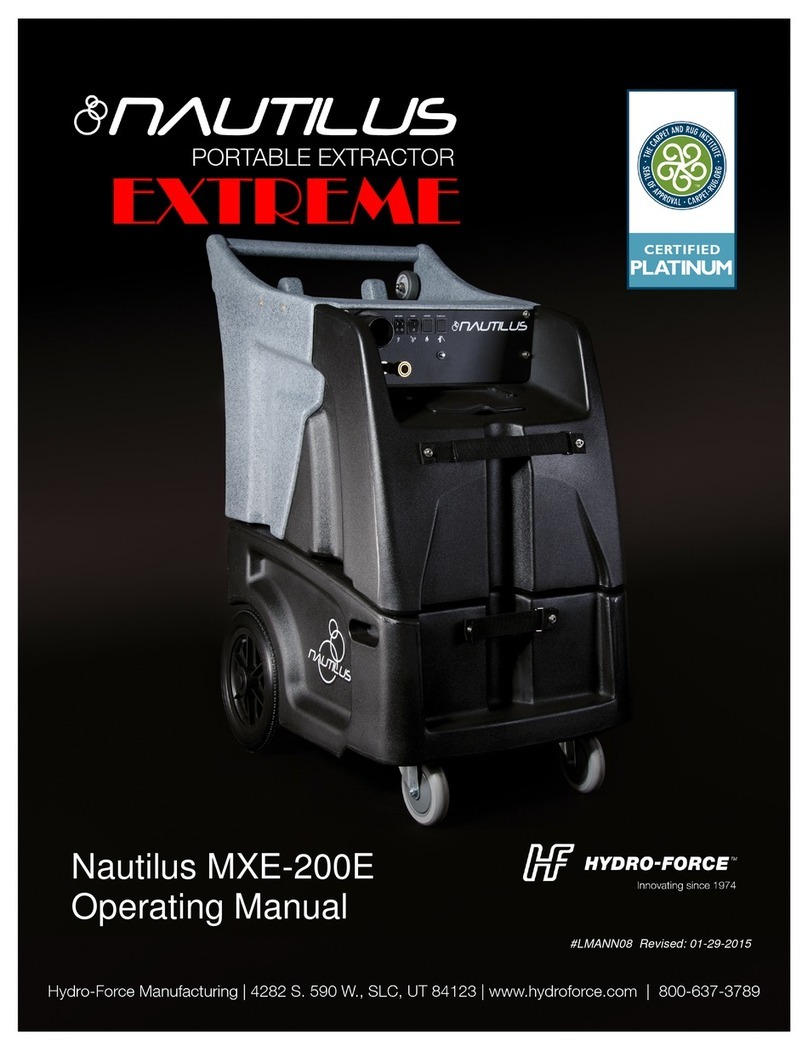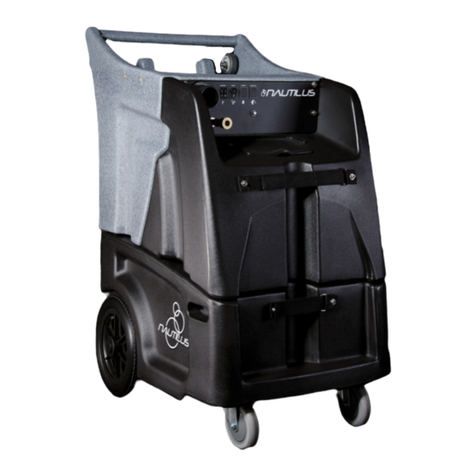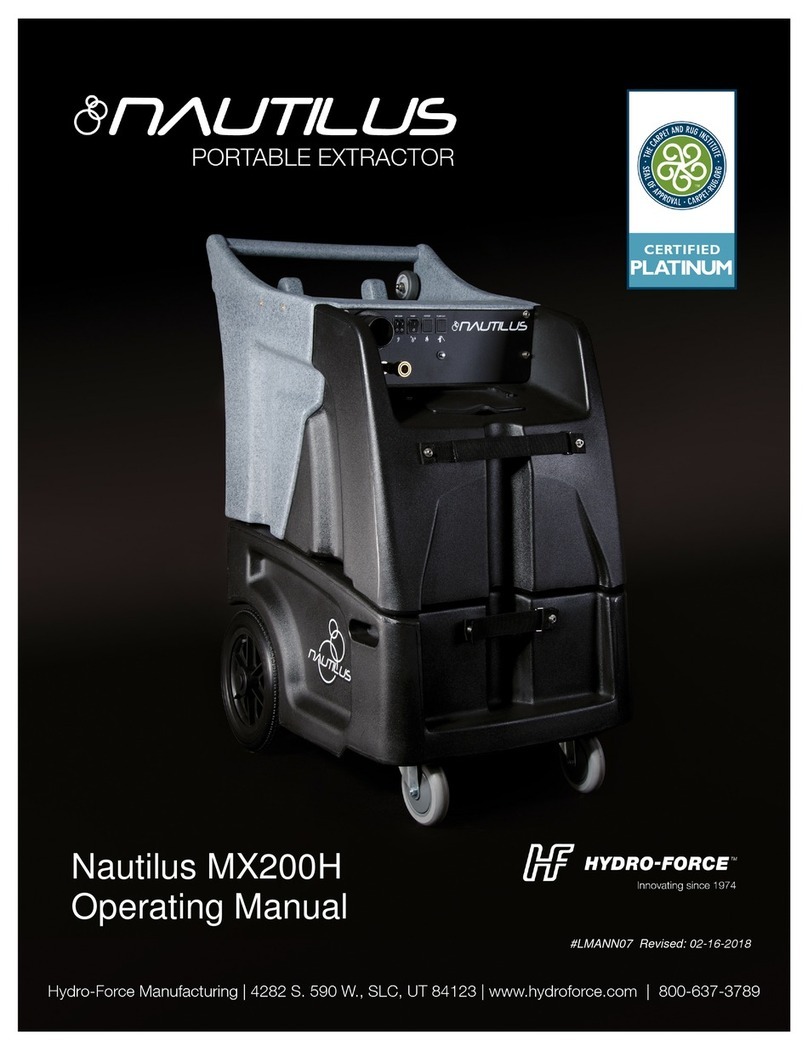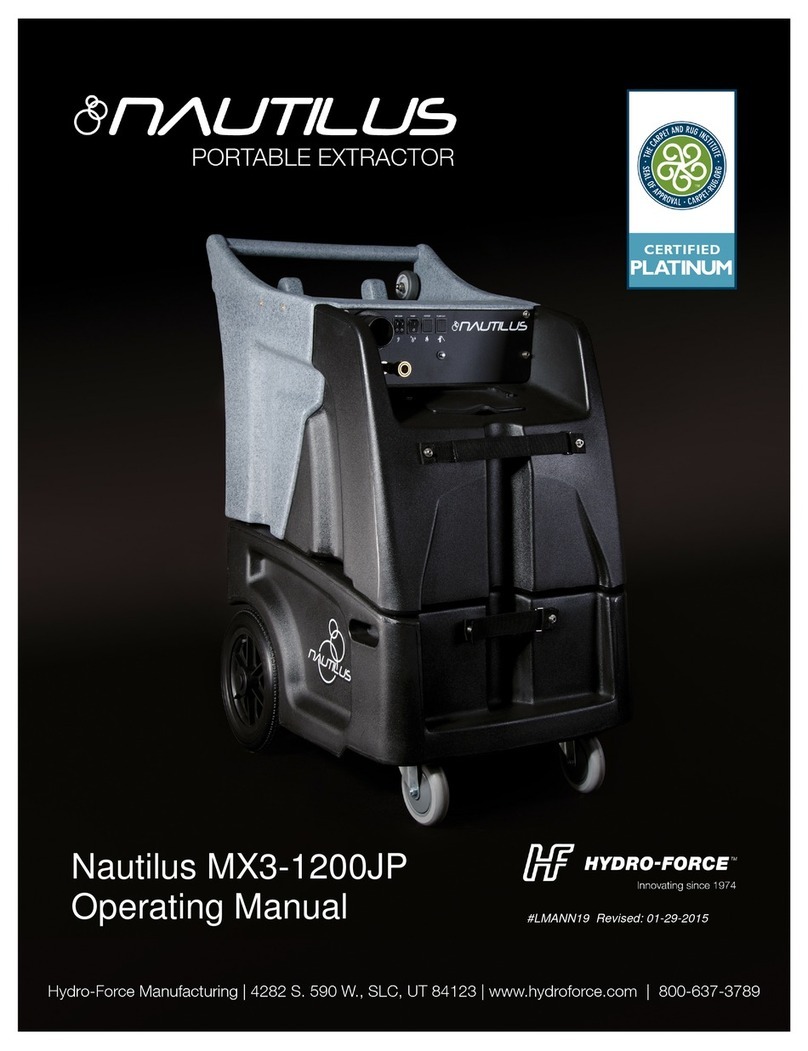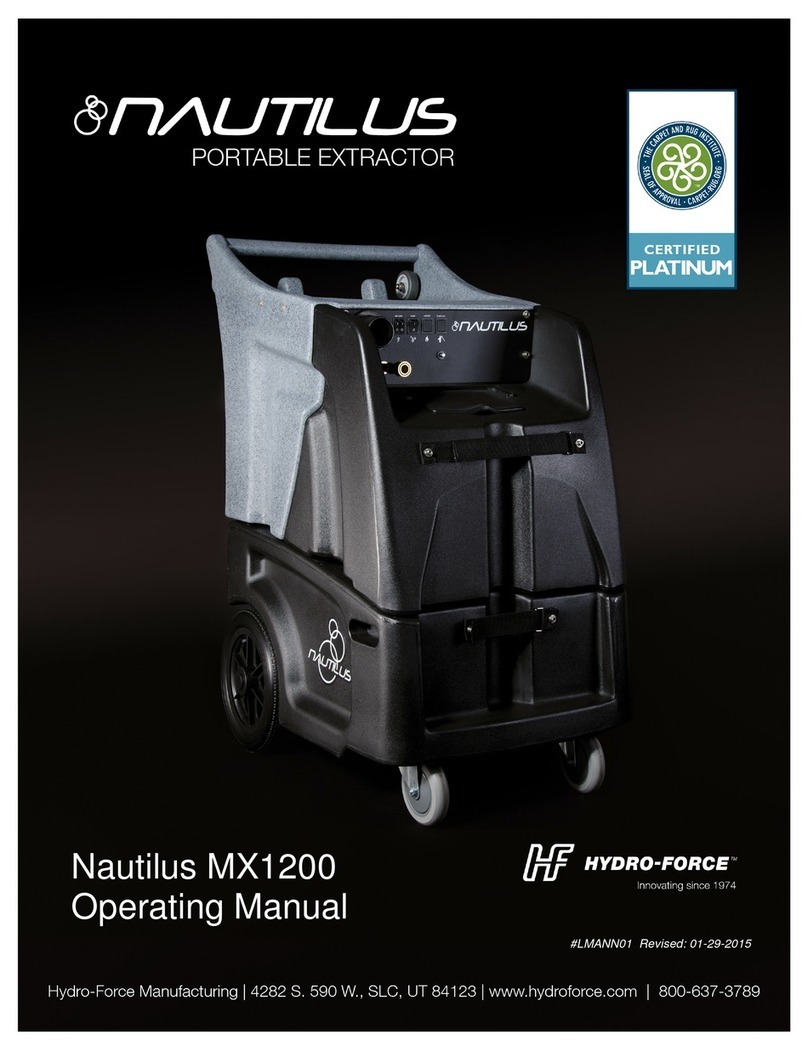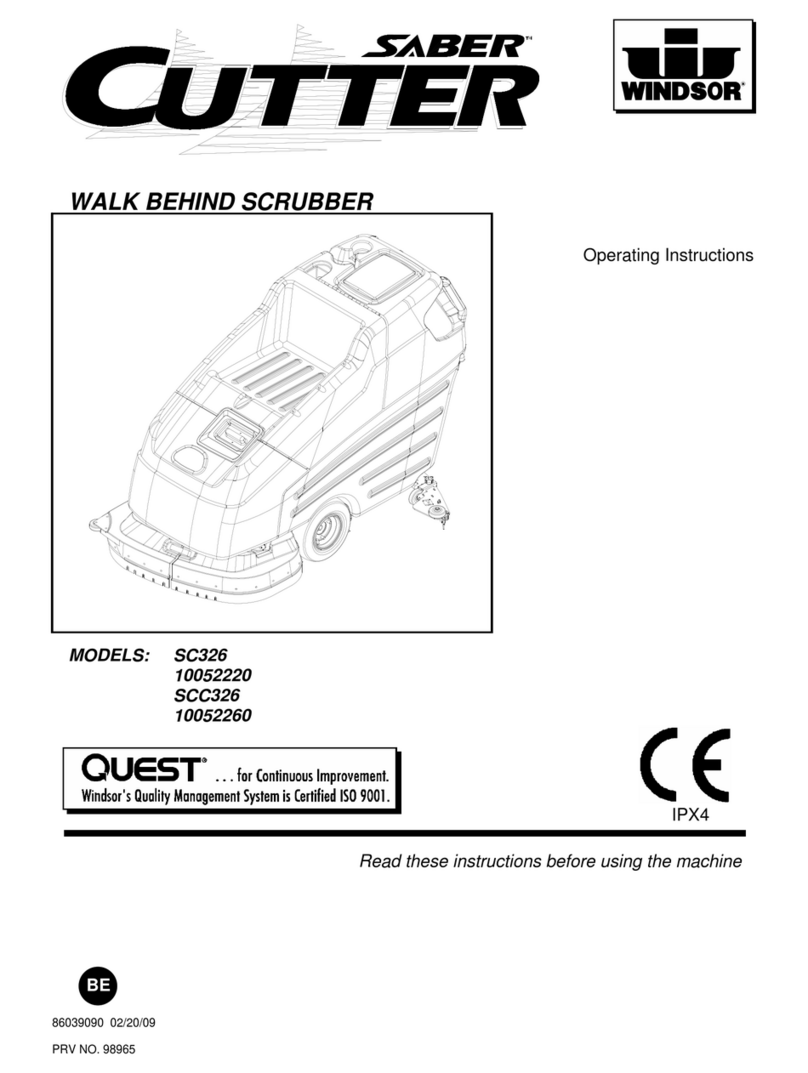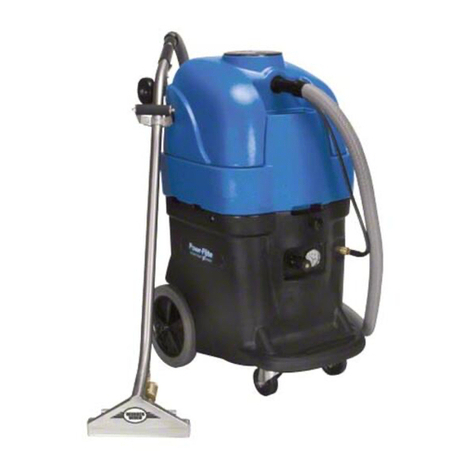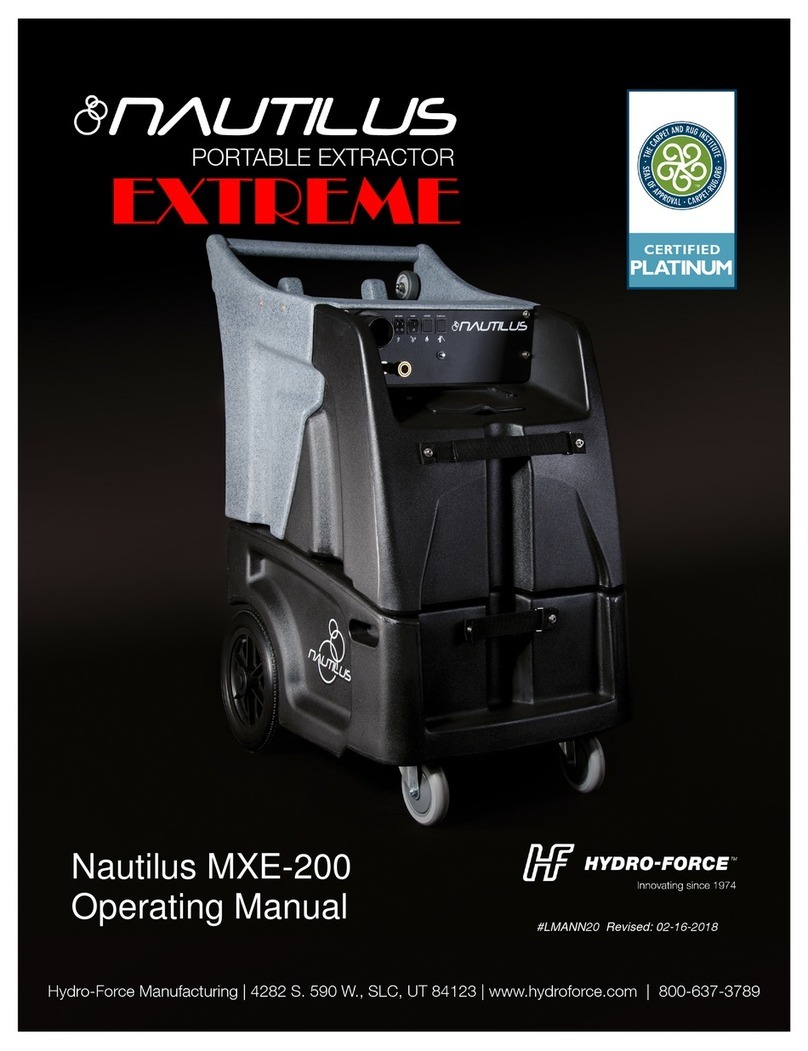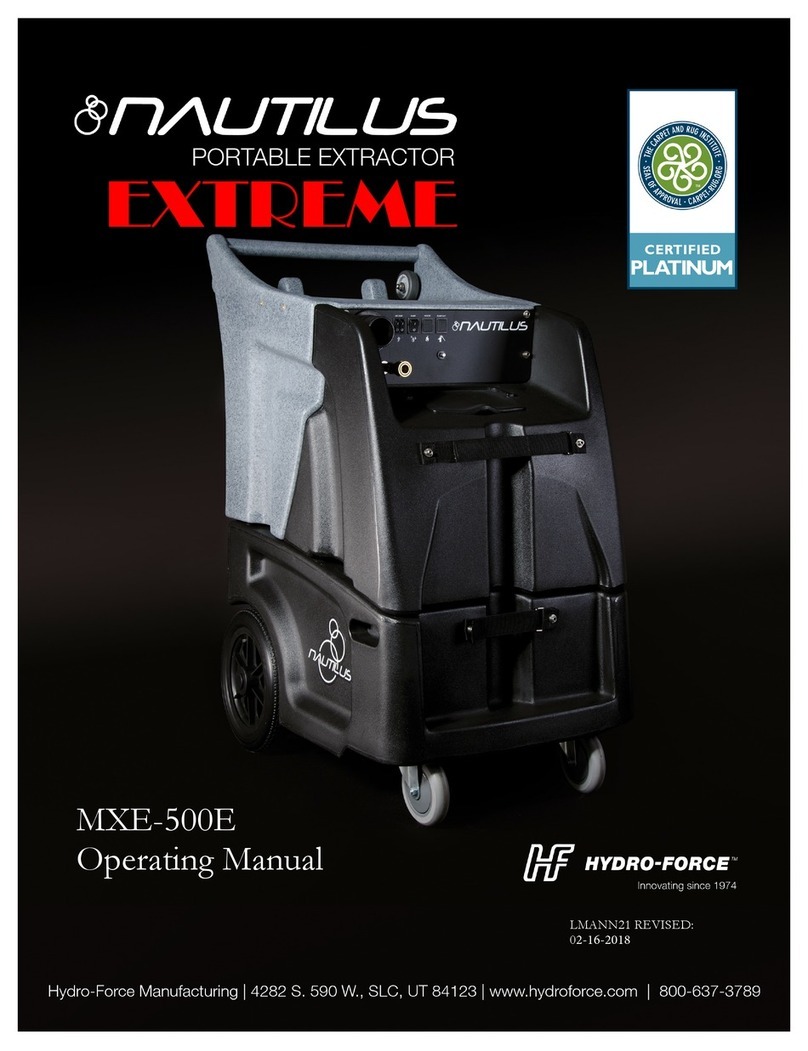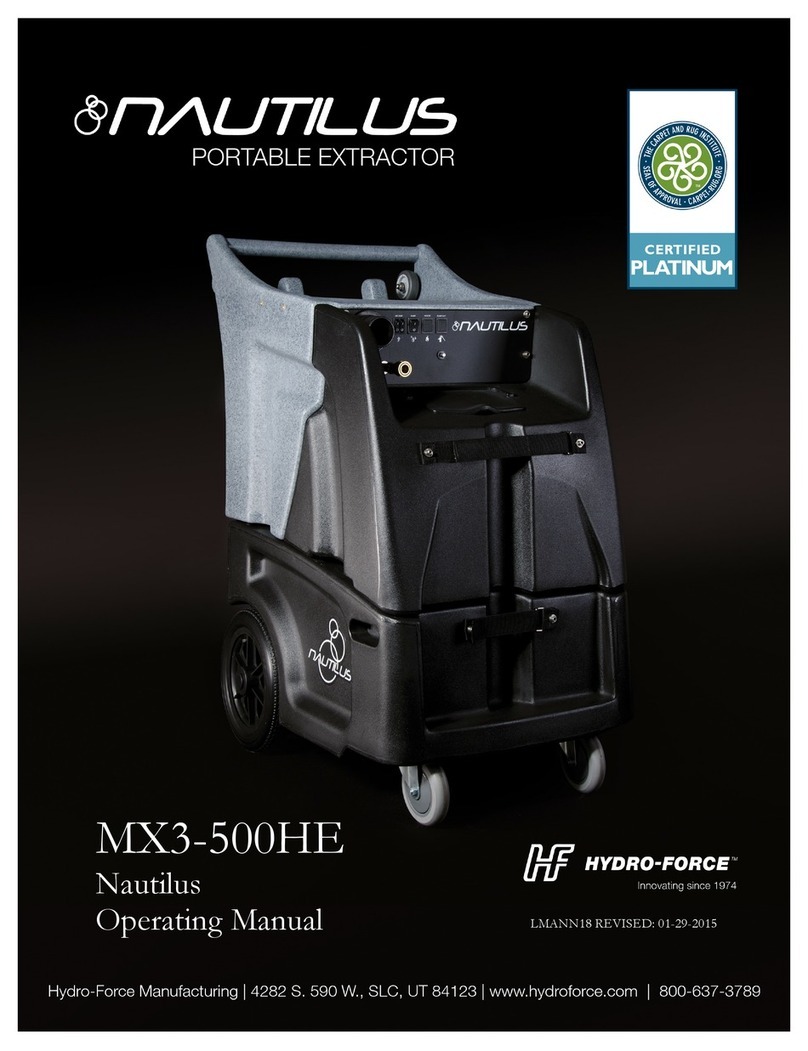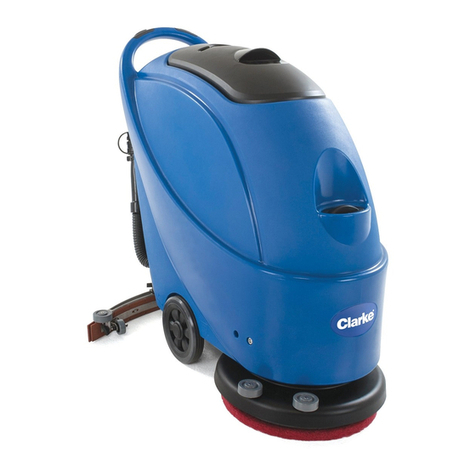
Manual Pump Prime
If the pump does not prime quickly, the vacuum may be used to aid priming:
• Direct the end of a short prime hose (1605-4177 sold separately) into the vacuum barb on the front of
the machine. The prime hose, 1605-4177, has a quick connect into the machine on one end and is open
on the other.
• Turn on one or both of the vacuum motors.
• Turn on the solution pump.
• Cup a hand around the hose & barb to increase the vacuum suction on the hose.
• When water is flowing out of the hose, direct the hose to the solution tank and turn off the vacuum
motors to ensure the flow continues when the vacuum is removed.
• When the flow is steady, turn off the solution pump, remove the hose, and proceed with machine set-up
procedures. If the pump still does not prime, or if flow is low or unsteady, check the hose from the
solution tank to the pump (as well as the inline filter) for clogging, kinks, or restrictions. Clean or replace
hose and/or filter and repeat the priming procedure.
If you are having trouble with the pump, refer to the trouble shooting guide or contact your distributor for
advice or assistance.
Pressure adjustment
If Applicable.
When the pump is on and primed, pressure will show on the gauge on the back of the Olympus (for units
that have a pressure gauge). The pressure reading on the gauge will drop from its static state when the
solution line is open and the tool is spraying. Re-adjust as need for desired running pressure.
• To decrease the pressure, turn the pressure regulator counter-clockwise.
• To increase the pressure, turn the pressure regulator clockwise.
The maximum pressure setting varies by Olympus model and is offered in 100, 200, 500 and 1200 PSI
configurations. Working pressures seen in real world environments are generally lower then labeled on
the pump.
The pressures labeled on the pumps are a maximum possible pressure they can output at a set flow rate.
Jet size and water flow rate on the cleaning tool effects the highest possible pressure rate the pump can
output. Smaller jets and lower flow will allow for higher pressure at the tool. Larger jets and higher flow
will lower the maximum pressure attained at the tool




